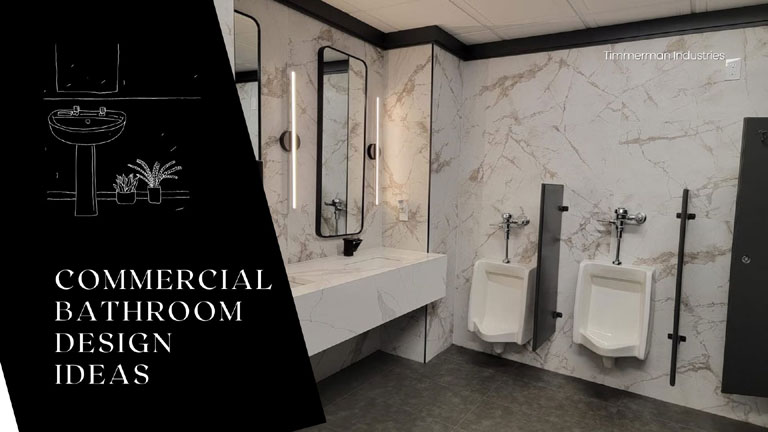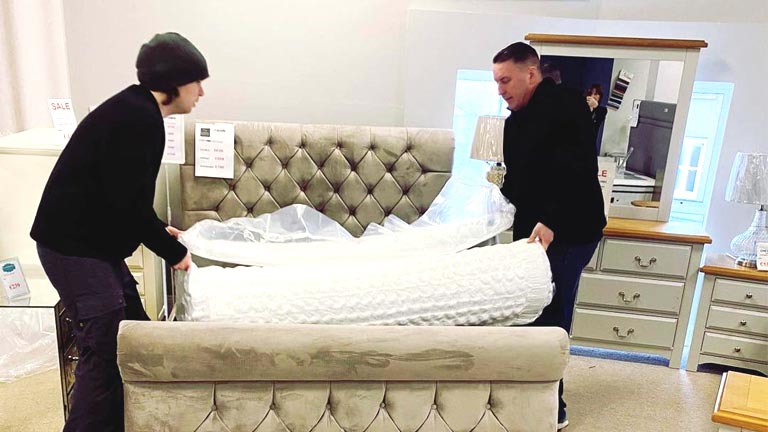
Commercial bathroom design options today speak volumes about the way a company considers convenience, cleanliness, and aesthetics. From lighting to tiles and the configuration of other smart bathroom accessories, all matter in the modern bathroom design. When you visit a shopping mall, café, office, or cinema hall, you may notice many things about their bathrooms – especially how they are designed and built to look luxurious.
So, what makes a commercial bathroom really look and work good, both for everyday use and long-term lifespan? Let’s look at some major concepts inspired by the approach of Premier Bathrooms and explore how these ideas are applied in real projects.
Function First, Style Second
In its essence, a bathroom is all about functionality. Spacious stalls, slip-resistant floors, and fixtures at the optimal height make life simpler for all, staff and visitors alike. No one wants to enter an environment that looks like a hospital hallway.
Modern designs balance both. You will see matte finishes replacing shiny chrome, soft lighting that avoids harsh shadows, and sinks built for high traffic that don’t splash water everywhere. A good bathroom doesn’t scream “luxury,” but it quietly delivers it through thoughtful choices.
Materials That Survive the Daily Grind
There are hundreds of users of those toilets per day in commercial buildings. The unsuitable material, for example, porous stone as flooring, will already be worn out after six months.
That’s why designers turn to rugged alternatives such as porcelain tile, stainless steel hardware, and solid-surface countertops. They not only survive wear and tear, but they also make cleaning quicker and more efficient. The cleaner spends fewer minutes scrubbing, which translates into cost savings for businesses down the line.
Accessibility Is Non-Negotiable
Good design implies that anyone can use the space at ease. This is not about compliance box ticking; it is about showing respect for the community. Wider doors, grab rails, lever taps, and intelligent layouts that make movement possible without awkward manoeuvres are part of this.
Ventilation
Ever entered a bathroom with a damp smell, even when it appears clean? That’s a lack of ventilation. Steam and moisture lead to mould, blister paintwork, and wreck even the most fantastic designs.
Intelligent systems integrate extraction fans, natural air flow, and ingenious ducting to maintain freshness. In large commercial environments, automated systems that react to humidity levels are increasingly popular. The initial cost saves maintenance money down the line by thousands.
Lighting
Lighting sets the tone. Harsh white LEDs can make bathrooms feel cold and clinical. Too dim, and you have got a cave nobody wants to visit.
The sweet spot is layered lighting, overhead for general use, wall-mounted near mirrors for grooming, and accents to create warmth. LED strips under counters are increasingly popular. They look modern, but they also guide people safely at night.
Sustainability
Water conservation and eco-friendliness inform bathroom design these days. Dual-flush toilets, sensor taps, and water-saving urinals are de rigueur. But it goes beyond that.
Recycled material partitions, energy-saving lighting, and even greywater reuse systems are appearing big projects. Customers take notice, too. A water-conserving business demonstrates it cares, and in a climate-aware city, that translates to good for reputation.
Technology Creeps In
Who remembers when “automatic taps” seemed futuristic? Today, technology surrounds us. Sensor soap dispensers, auto-flushing toilets, and app-enabled cleaning schedules are smartening up commercial restrooms.
In busy venues such as shopping malls, electronic counters count the number of individuals entering the toilet, sending messages when it’s cleaning time. It’s technology meeting sanitation. And although some smaller venues remain old-fashioned, the trend is definitely going tech-savvy.
Aesthetics That Reflect the Business
Bathrooms aren’t separate rooms. They are a representation of the overall atmosphere of a business. A hip Inner West café with mural paintings and reclaimed wood benches looks out of place if the bathroom is a corporate office.
That doesn’t have to be a tacky design. Even the little things – coordinated color schemes, good signage, or artwork – link the bathroom to everything else in the venue. It is about continuity. Guests remember the way a space makes them feel, and bathrooms are a part of that feeling.
Final Thoughts
Commercial bathrooms may not be the jewel in a building, but they’re the behind-the-scenes stars. They deal with high traffic, withstand heavy duty, and quietly affect the way a business is experienced by people.
From suburb-specific issues to international trends in technology and sustainability, contemporary commercial bathrooms design is about more than taps and tiles. It’s about making sensible decisions that work for function and aesthetics.
And the next time you enter a well-designed bathroom, recall — someone spent hours deliberating where that tap should be placed, which tile would endure, and how to prevent it from smelling like a dog’s bottom.


